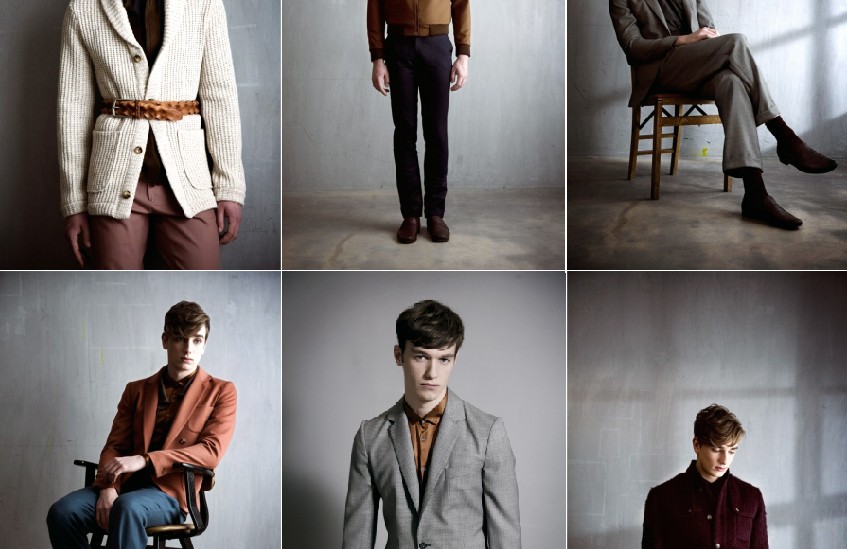Most men have a love affair with themselves. […] Staring admiringly into the mirror, this season takes its beauty cues from Mr. Vanity himself, Narcissus. A mythological tale about the pitfalls of self-indulgence perhaps, but a beautiful one at that. Lee C. Wallick in “Vanity Affair”, 2010
The young Dutch fashion designer Sjaak Hullekes is unique in a number of respects. Not only do all his collections develop from a former factory building whose interiors exude the charms of something between a curiosity shop and Alice in Wonderland 2.0. Also, his designs seem to reconcile different strands of male identity we have seen ourselves confronted with during the past couple of years. To name but a few, Guy Trebay’s return of masculine features and a buck physique; Hedi Slimane’s razor-sharp designs for YSL and Dior Homme; and the metrosexual cliché of tailored suits and pink shirts.
In themselves, none of the above seems worthy of extra attention. However, the flirtations with attributes traditionally considered “women’s business” are points worthy of consideration. Until recently, cutting-edge looks or a penchant for self-indulgence had been practically absent from the heterosexual register. If anything, Dyer (2002) suggests that men’s concern with personal appearance and self-care have been associated with “queer looks” and campy behaviour, both of which categories rather unpopular in the eyes of the general public (cf. Warner, 2000).
In 1964 Susan Sontag wrote in “Notes on Camp”:
As a taste in persons, Camp responds particularly to the markedly attenuated and to the strongly exaggerated. The androgyne [sic] is certainly one of the great images of Camp sensibility. […] Camp taste draws on a mostly unacknowledged truth of taste: the most refined form of sexual attractiveness (as well as the most refined form of sexual pleasure) consists in going against the grain of one’s sex. What is most beautiful in virile men is something feminine; what is most beautiful in feminine women is something masculine. . . . Allied to the Camp taste for the androgynous is something that seems quite different but isn’t: a relish for the exaggeration of sexual characteristics and personality mannerisms.
Ironically, Sontag’s description – as early as 1964, to be sure – reads almost like a blueprint for man’s current occupation with himself, ‘characterized by a more self-conscious sense of maleness’, as Nixon (1996, p. 3) writes. The question, then, is what factors have fed into this trend and/or have driven it forward?
Let’s call it postmodernism
Historically speaking, the profound self-fashioning of male sexuality dates back to pre-Renaissance times where for the first time, on such a scale and on so enduring a basis, we find a society in which the potential to purchase novelties, cosmetics, and clothing extended well beyond a small, traditional elite and where the acquired goods served to fashion a masculine type of material culture that was replete with features we only later came to identify as “feminine“.
Yet it was not until the advent of Jean-Paul Gaultier that menswear was taken by its feet again to go on a helter-skelter journey raising a number of questions which had all to do with male gender identity and male dress codes. Ever since his first menswear collection in 1984, French fashion designer Jean-Paul Gaultier has questioned the boundaries between the sexes and highlighted gender inequalities in terms of acceptable ways of dressing. This quest pertains to a number of issues starting with the choice of fabric or cut, but it also includes entire clothing items that were transferred from one domain to the other, both from women’s wear to menswear and, in his women’s collections, vice versa. Most prominently, this probing of boundaries was featured in his S/S 1985 collection ‘Et Dieu Créa L’Homme’ – a provocative play on the title of Roger Vadim’s 1957 movie ‘Et Dieu Créa La Femme’ starring Brigitte Bardot. It was in this collection that Gaultier would begin to include skirts for men that were made from a pair of trousers in which one leg was wrapped over the other. In turn, these were a reprise of a pair of Jacques Esterel Bermuda shorts, for whom Gaultier had worked in the 1970s. The resulting garment transgressed gender norms in ever so subtle ways while blurring the boundaries between menswear and women’s wear by incorporating formal signifiers of them both.When asked in a 1985 interview whether men were about to renounce their virility by wearing skirts, he tersely replied, ‘Virility isn’t something you put on, it’s something you have to prove’. Even though his words may not seem all that uncommon nowadays, the example illustrates an interesting difference between the world of women’s wear and menswear. While women over the centuries have repeatedly borrowed clothing styles from men’s traditional attire, it was a rare instance for the reverse to take place, let alone to develop into a large-scale phenomenon.
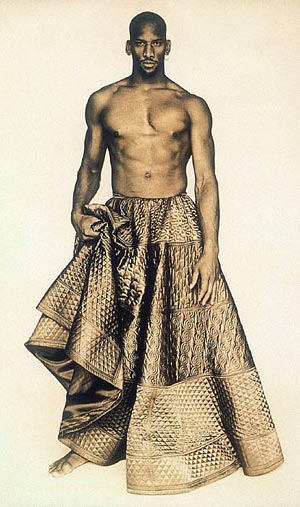 Arguably, the determinant factors cannot be ascribed to a single cause or a particular historical current. Still, several authors indicate that the shift in male scripts has its origins in the smorgasbord, heady culture of 1980s – a hotbed for a wide variety of unseen and sometimes outré social phenomena, of which Gaultier’s foray to include skirts into men’s fashion were an important part (Seidler, 1992; Nixon, 1996; Scheub, 2010). According to cultural historian Frank Mort (1996), much of the trend towards a change in masculine identity concepts is best understood against the background of profound cultural upheaval at the time. Drawing on French sociologist Pierre Bourdieu, he develops the argument of a cultural crisis in which to place the development. As he writes,
Arguably, the determinant factors cannot be ascribed to a single cause or a particular historical current. Still, several authors indicate that the shift in male scripts has its origins in the smorgasbord, heady culture of 1980s – a hotbed for a wide variety of unseen and sometimes outré social phenomena, of which Gaultier’s foray to include skirts into men’s fashion were an important part (Seidler, 1992; Nixon, 1996; Scheub, 2010). According to cultural historian Frank Mort (1996), much of the trend towards a change in masculine identity concepts is best understood against the background of profound cultural upheaval at the time. Drawing on French sociologist Pierre Bourdieu, he develops the argument of a cultural crisis in which to place the development. As he writes,
Crisis moments…are essentially struggles over rival systems of classification. Positions are staked out, producing a number of clearly distinguishable camps and forcing participants to endow their arguments with a coherence which would not be required under normal circumstances (ibid., p. 15).
According to the argument, the departure from a more traditional male register is to do with men’s struggle to establish new markers of difference and their ambition to flag a newly-found yet insecure social terrain; its coming of age, then, needs to be understood in terms of a gradational progression over time rather than an all-changing watershed. Insomuch as crisis moments may lead to confusion every now and then, over time they also tend to produce new and interesting concoctions. What is interesting about the phenomenon is how the struggle for new sites for self-definition (sexual and otherwise) ushered in a social climate where the possibilities for playing with different and more diverse social identities have become greater than ever before. Men’s probing of boundaries consequently might be seen as a reflection of the contemporary spirit of fluid personae and more flexible identity concepts.
What above detour on changing male looks might have put to the fore is how a more plural and flexible appropriation of male identity has been a rather recent phenomenon which has its roots on the one hand in second-wave feminism and, on the other, in post-modern culture. Fast forward 2011 and still we are vexed with the question how to make sense of these ongoing changes.
Shall we call it metamodernism?
This text set out by declaring that the fashion designs of young Dutch Sjaak Hullekes in certain ways happen to tell a story of contemporary sensibilities in menswear because they allow – not unlike Gaultier some 20 years before him – for a questioning of its boundaries. A graduate from ArtEZ Institute for Arts and Design in Arnhem, Hullekes is part of a new generation of young Dutch designers including Rotterdam-based Jeroen van Tuyl, Ivo Mittelmeijer and Lanvin menswear designer Lucas Ossendrijver who all have gained recognition in recent years for experimenting with different images of masculinity. Eminently, Hullekes’ designs are replete with examples of a subtle play with gender conventions through integrating female signifiers in his work. In his collections, he seeks to play with ‘the fragility of the male [and] his behaviours in modern times’ as well as ‘how to escape from daily cares and create your own romanticized life’. In so doing, an undercurrent to his work has been the ongoing quest for exploring male identity in ever different ways and by different means, always with a view to the factors that pertain to performance and personal interpretation. A thread running through his work is the constant play with the shape of the male body rather than pre-conceived ideas about its defining features. Compared to, for instance, Slimane’s rigorous and ascetic looks and the foregrounding of a hard-edged male physique, Hullekes’ designs are softer and more ornate in character. The emerging image is one of a modern-day dandy who uses his wardrobe as both armature and means of personal expression; a self-assured yet chary male who takes resort to (measured) aestheticism as a means to go through life while embracing it with his eyes wide open.
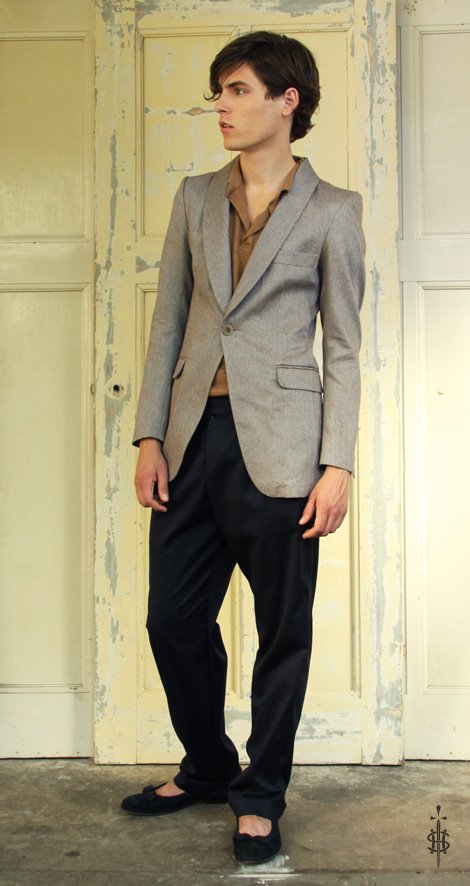
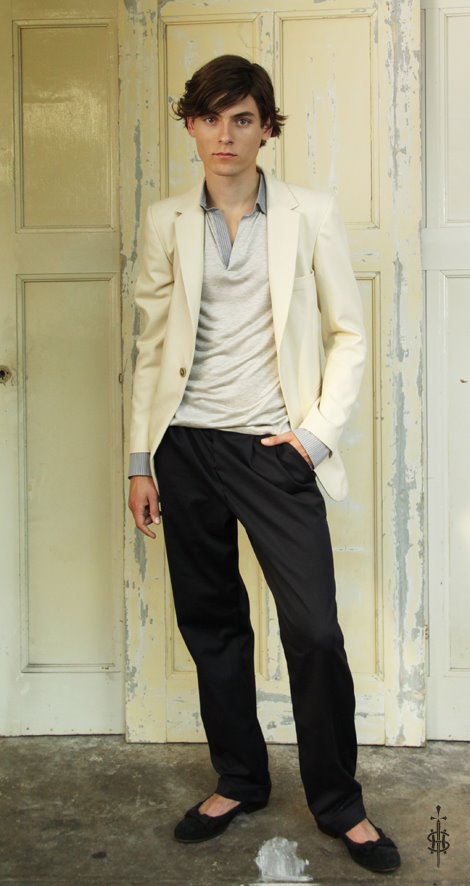
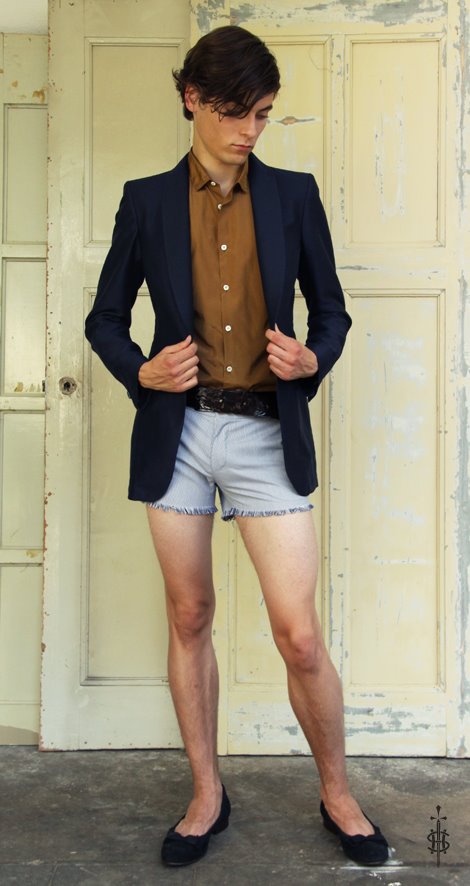 Masculinity in this context becomes defined in terms of a foil on which to project markers of personal identity and reconfigure them in ever new ways. Hullekes’ clothing embraces not so much formalism as its point of departure, but draws inspiration from an identity concept which, via a grand gesture, is frail and incessantly challenged. The act of dressing in this context becomes a play with protectionism and self-indulgence in which the wearer is at once hidden and exposed, coy and adventurous, self-loving and constantly questioning himself. The fashioning of the self consequently takes the form of a self-reflexive exercise in contemplating, and coming to terms with, the instabilities of modern life. In so doing, each collection has been permeated by a specific theme, thereby orchestrating a wide variety of ideas about present-day masculinity in its multiple forms. A primary stylistic device in his work are strong contrasts, examples of which might be traditional tailoring playing against unexpected patterns and textures; corduroy being set off by synthetics; leather belts supplementing fine linen jackets; semi-transparent cashmere acting as a foil for delicate silks; or slender suit jackets being juxtaposed with voluminous trousers and ballerina shoes.
Masculinity in this context becomes defined in terms of a foil on which to project markers of personal identity and reconfigure them in ever new ways. Hullekes’ clothing embraces not so much formalism as its point of departure, but draws inspiration from an identity concept which, via a grand gesture, is frail and incessantly challenged. The act of dressing in this context becomes a play with protectionism and self-indulgence in which the wearer is at once hidden and exposed, coy and adventurous, self-loving and constantly questioning himself. The fashioning of the self consequently takes the form of a self-reflexive exercise in contemplating, and coming to terms with, the instabilities of modern life. In so doing, each collection has been permeated by a specific theme, thereby orchestrating a wide variety of ideas about present-day masculinity in its multiple forms. A primary stylistic device in his work are strong contrasts, examples of which might be traditional tailoring playing against unexpected patterns and textures; corduroy being set off by synthetics; leather belts supplementing fine linen jackets; semi-transparent cashmere acting as a foil for delicate silks; or slender suit jackets being juxtaposed with voluminous trousers and ballerina shoes.
What is crucial about all these examples is how the resulting designs do not indicate a stand-off between masculine and feminine but, rather, reconcile the two to become a new breed in its own right. Androgyny concerns aside, perhaps menswear’s current sensibilities do not only indicate a shift in the male register, but also speak of a newly-found self-consciousness. The actual legacy consequently might be that the male silhouette, in certain respects and to varying degrees, has become more refined and diverse. The fact worthy of attention, therefore, is how contemporary men’s clothing has become much more permissible and diverse in its outlook. The “lumberjack type” with chequered flannel shirt, sturdy boots and a rugged pair of jeans has its place in the closet right next to “American preppy” styles à la Calvin Klein, or a sharply-tailored suit as offered even by the likes of Next, Zara or H&M nowadays. It is therefore not a question of choosing one thing over the other, but the actual fact that many different fashion styles are widely available and coexist next to each other attests to a development where the possibilities for men to play with different identities and perceive of themselves as objects of self-adornment seem more open than ever before. Ultimately, therefore, it is not a question of (n)either… (n)or, but both… neither.
Bibliography
- Dyer, R. (2002). The Culture of Queers. London: Routledge
- Ehrenreich, B. (1987). The Hearts of Men: American Dreams and the Flight from Commitment. New York: Anchor Books
- Mort, F. (1988). Boy’s own? Masculinity, Style, and Popular Culture. In: Male Order. Unwrapping Masculinity; R. Chapman & J. Rutherford (eds), pp. 193-224. London: Lawrence & Wishart
- Nixon, S. (1996). Hard Looks: Masculinities, Spectatorship & Contemporary Consumption. New York, N.Y.: St. Martin’s Press
- Poels, K., Dewitte, S. & Vyncke, P. (2005). Changing Roles, Changing Preferences?: The Dual Impact of Gender Identity. Leuven : Katholieke Universiteit Leuven, Faculty of Economics and Applied Economics, Department of Applied Economics
- Scheub, U. (2010). Heldendämmerung: Die Krise der Männer und warum sie auch für Frauen gefährlich ist. New York: Pantheon Books
- Seidler, V. (1992). Men, Sex, and Relationships: Writings from the Achilles Heel / ed. by Victor Seidler. London & New York: Routledge
- Sontag, S. (1964). Notes on Camp. Accessed online on 26 January, 2011.
- Wallick, L. C. (2010). Vanity Affair: Beauty and Grooming. In: Man About Town, Vol. 6 Spring/Summer 2010, pp. 88-95
- Warner, M. (2000). The Trouble with Normal: Sex, Politics, and the Ethics of Queer Life. Cambridge, MA: Harvard University Press

